ITS Doctor Create Ferroresonance On Electrical Systems Network Detector
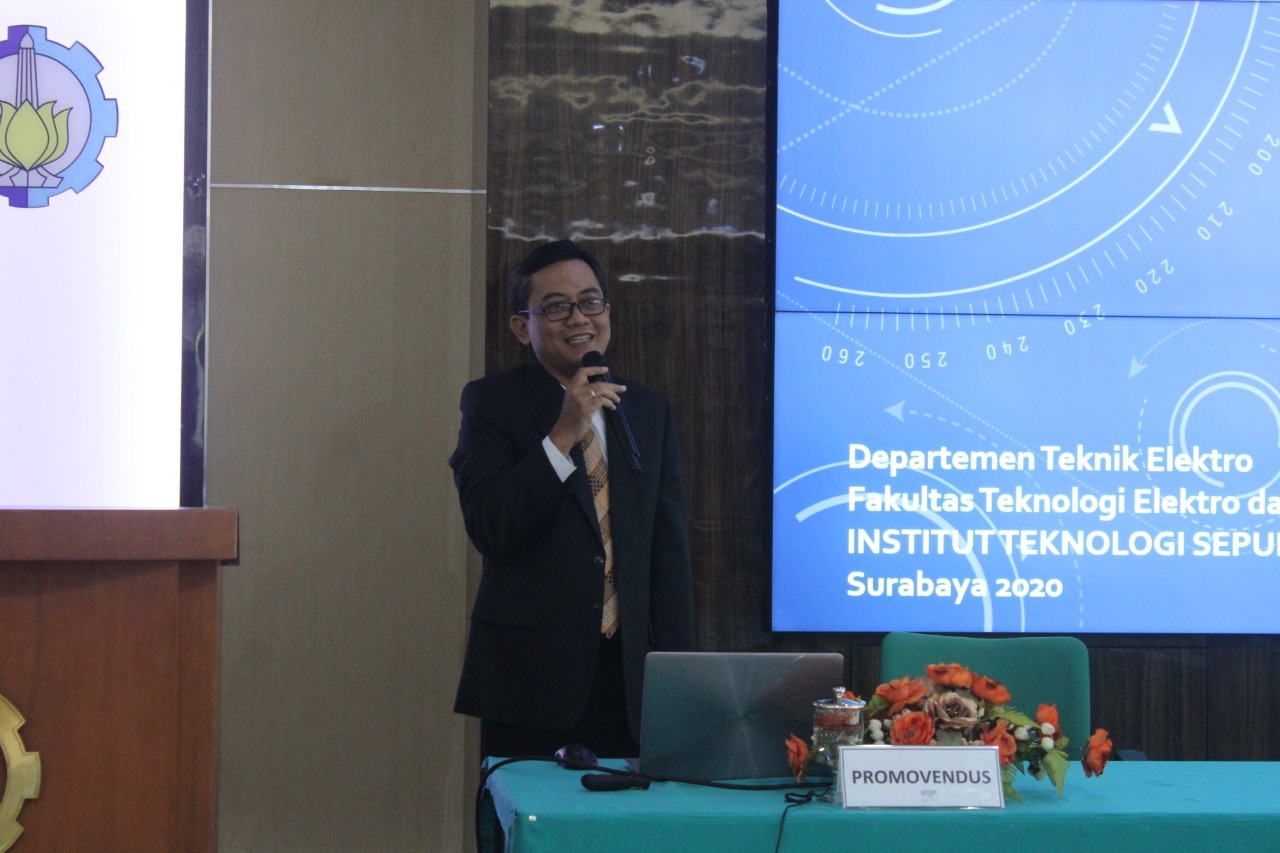
I Gusti Ngurah Satriyadi Hernanda presenting his dissertation in the open session of doctoral promotion at Department of Electrical Engineering
ITS Campus, ITS News – in the electrical power systems network, transformers become a crucial component, but various potential disruptions cause damage to the transformer. The problem is the main concern for I Gusti Ngurah Satriyadi Hernanda, a doctoral program student of the Department of Electrical Engineering Institut Teknologi Sepuluh Nopember (ITS) in his dissertation.
The man who was familiarly called Didit graduated as a doctor after maintaining his dissertation titled Ferroresonance Identification on the Wavelet Transformation-based Power System in the open session of the doctoral promotion in the Department of Electrical Engineering ITS courtroom, last February.
Furthermore, Didit explained that in the electrical power systems network, the transformer itself is used to reduce the power loss by increasing the voltage. “Because of its vital role, Transformer must continue to kept stability of various types of disorders,” said Didit.
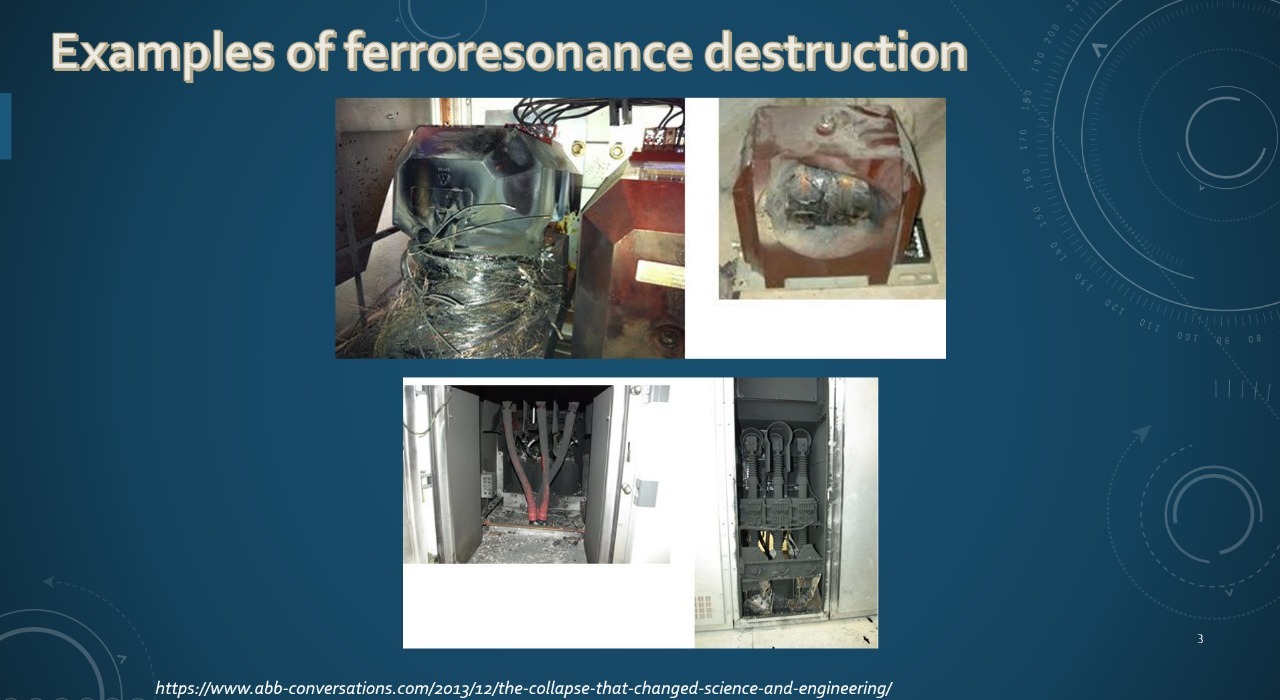
Examples of damage from ferroresonance in electric power systems
The field of research that is being persevered by the lecturer of the Department of Electrical Engineering is referring to one of the difficult transformers that are predicted to exist, namely ferroresonance. Ferroresonance itself is characterized by the presence of overvoltage and inconsistency of waveforms. “From the discrepancy of the waveform is grouped into four different types,” Didit explained.
The man from Singaraja added that the classification of four types was determined based on stable conditions. This is due to transient conditions, it is difficult to distinguish other transient signals with ferroresonance signals. “The four types of the ferroresonance are Fundamental, Subharmonic, Quasi-Periodic, and Chaotic,” he described.
Didit also explained that in chaotic mode, the voltage magnitude is inconstant. Thus, the resulting waves are non-periodic. “It makes the chaotic mode of ferroresonance can not be interrupted at any frequency and difficult to predict,” said the father of two children.
Lecturer of High Voltage Laboratory said that this research is not possible to be applied directly in the field, considering the high risk that can be caused. Thus, the testing of ferroresonance in this study-based on a laboratory scale. “For that, created the model of the basic circuit of ferroresonance consisting of voltage sources, capacitors and transformers connected in series,” he explained.
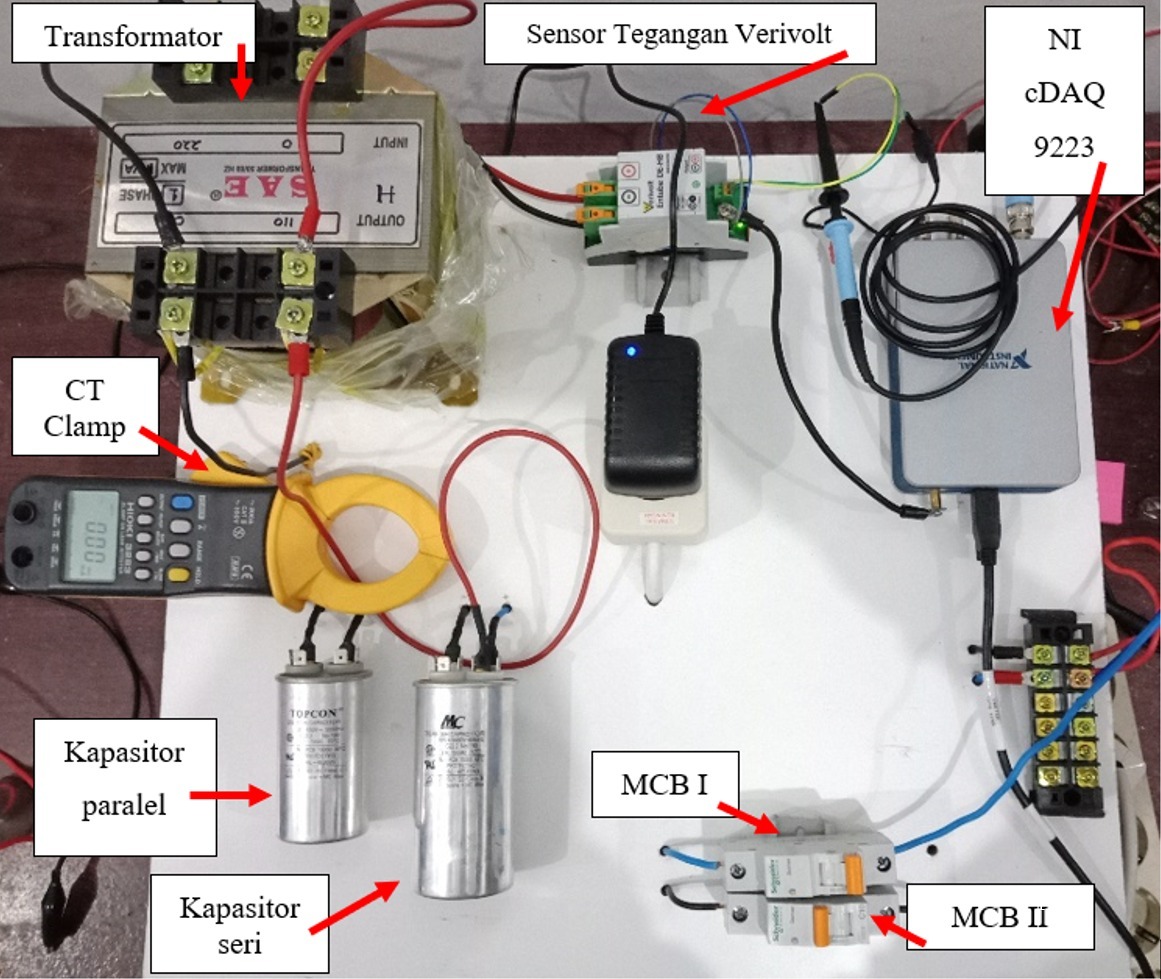
Realization of Ferroresonance Test Model
On the device testing the model above, can not be tested on electrical power systems using high voltage. This is because of the danger that can be caused, so it is converted to low voltage. “In this experiment used low-phase transformers, series and shunt capacitor components, as well as switching as a trigger component,” said the alumnus of the Bandung Institute of Technology.
For the processing results, Didit expressed that the used method is the transformation wavelet method. A linear mathematical calculation that refers to solving a wave signal with scaling and positioning shifts. “The data obtained were processed with a discrete wavelet transformation that processes the signals by dividing it into low-frequency and high-frequency parts,” explained the alumnus of SMAN 1 Surabaya.
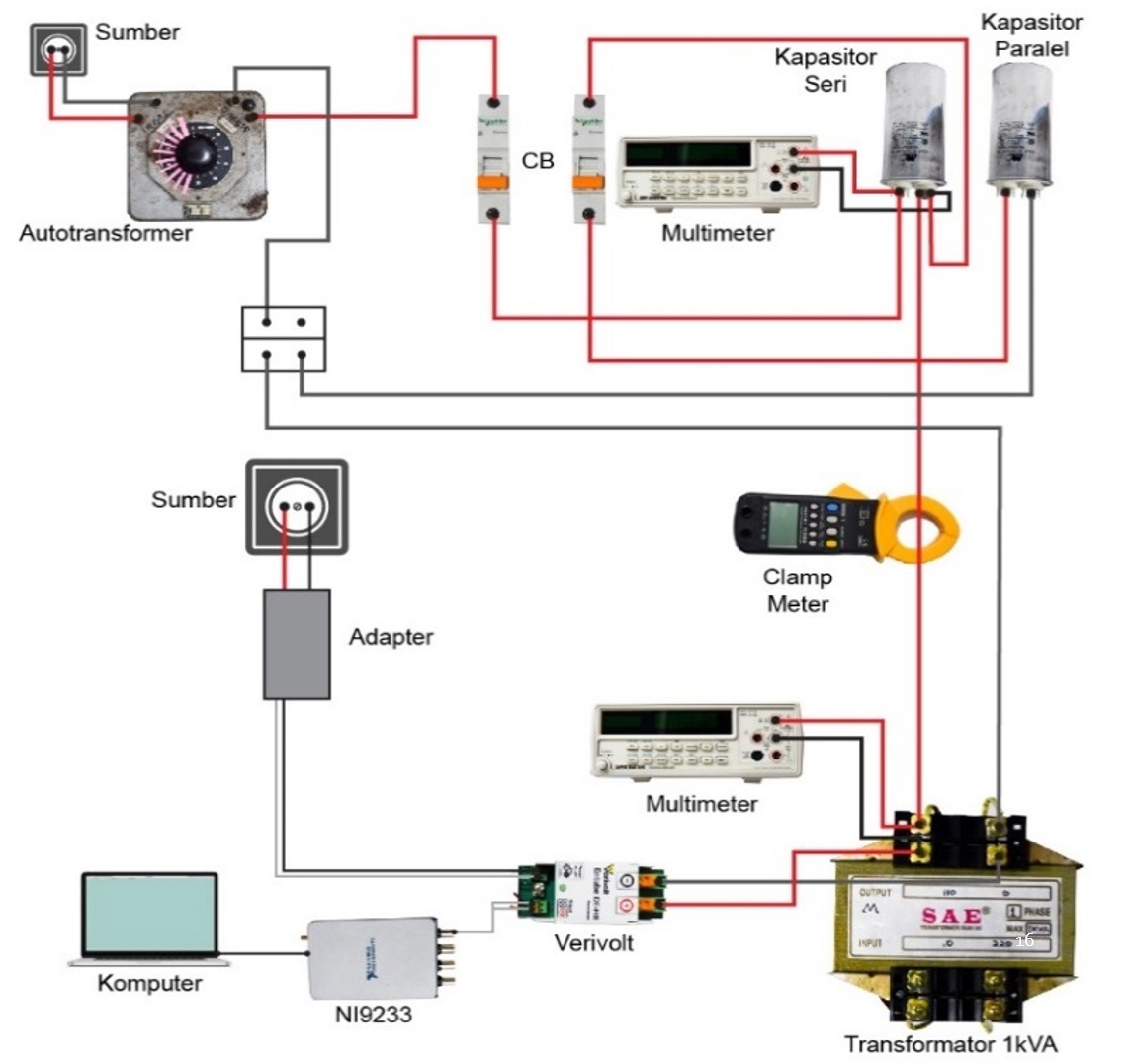
Ferroresonance Test Model
Furthermore, Didit explained that data recording using several capacitor variations and recorded each source voltage was raised to 10 percent. With this, there will be a graph of a wavelet transformation signal, in which each variation of the capacitor shows a significant difference in the high amplitude. “For waves that indicate the ferroresonance itself has the highest peak points compared to other waves,” he said.
The method of wavelet transformation itself has been successfully tested on the electrical power system network in an industry whose transformer burns. With these methods, it can be analyzed that the existing sampling shows the symptoms of ferroresonance. “Indeed the actual ferroresonance events usually occur only in a complex system, as is the power system in the industrial scale,” said the man who born January 23, 1973.
In the future, the student guided by Prof. Dr. Ir Adi Soeprijanto MT and Dr. Eng I Made Yulistya Negara ST MSc is hoping that his research studies will continue on the mitigation of Feroresonansi. Didit added that similar to a disease, a new early symptom detector was found. “Later, it will lead to treatment and prevention to minimize the occurrence of ferroresonance,” he concluded. (tri/rev/ITS Public Relations)
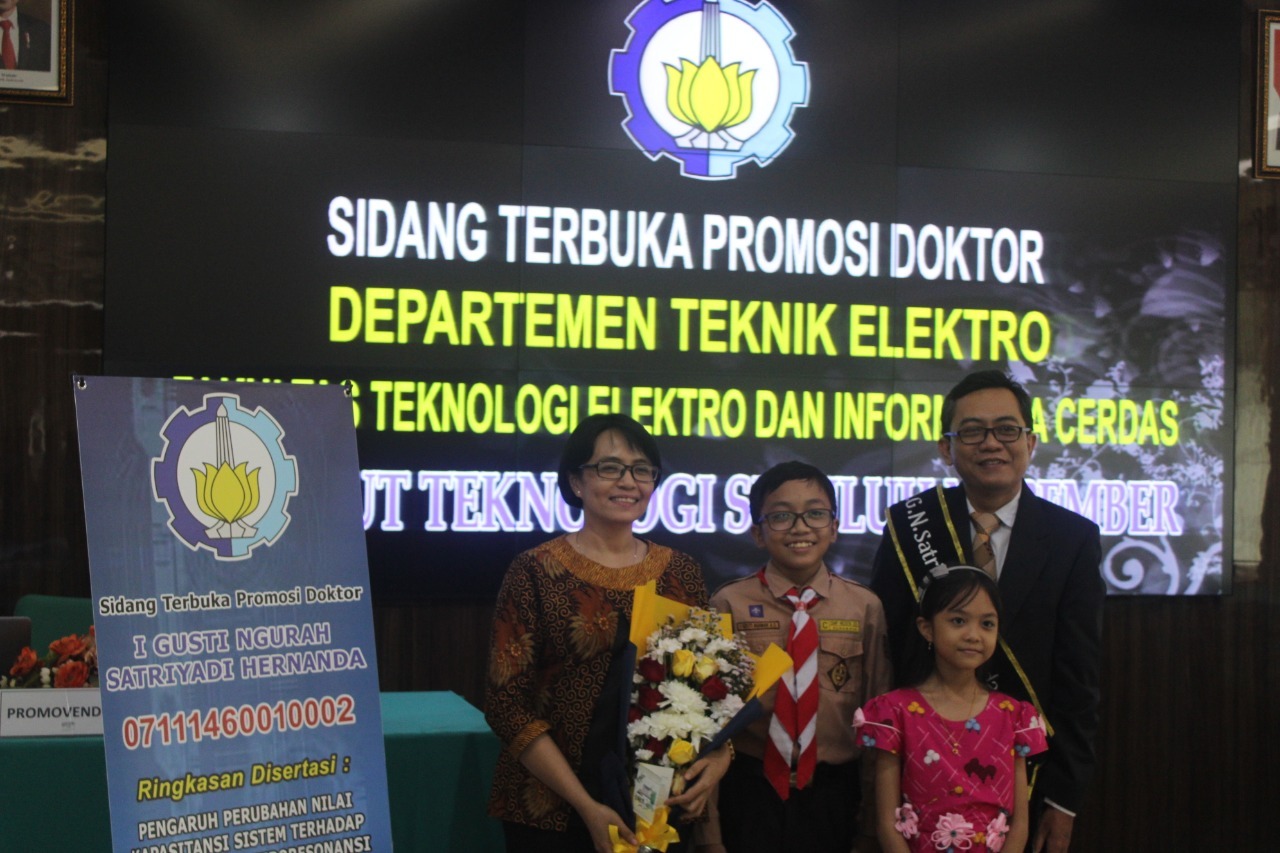
I Gusti Ngurah Satriyadi Hernanda with the family after the open session of doctoral promotion
Related News
-
General Director of Diktiristek Inspects UTBK at ITS
ITS Campus, ITS News — Institut Teknologi Sepuluh Nopember (ITS) proves its commitment to providing the best facilities for
March 05, 2020 08:03 -
Competing Strictly, 9,936 Participants Attend UTBK SNBT 2024 at ITS
ITS Campus, ITS News — Starting its implementation, Institut Teknologi Sepuluh Nopember (ITS) as one of the Computer-Based Written
March 05, 2020 08:03 -
Passing Leadership to ITS, PTN-BH MWA Forum Formulates RPP RI for Higher Education Implementation
ITS Campus, ITS News — Institut Teknologi Sepuluh Nopember (ITS) Surabaya hosted the National Gathering of the Forum of Trustees
March 05, 2020 08:03 -
Inaugurates New Chancellor, ITS Affirms Itself as a Sustainable University
ITS Campus, ITS News — Institut Teknologi Sepuluh Nopember (ITS) once again experienced the historic moment of inaugurating the new
March 05, 2020 08:03
